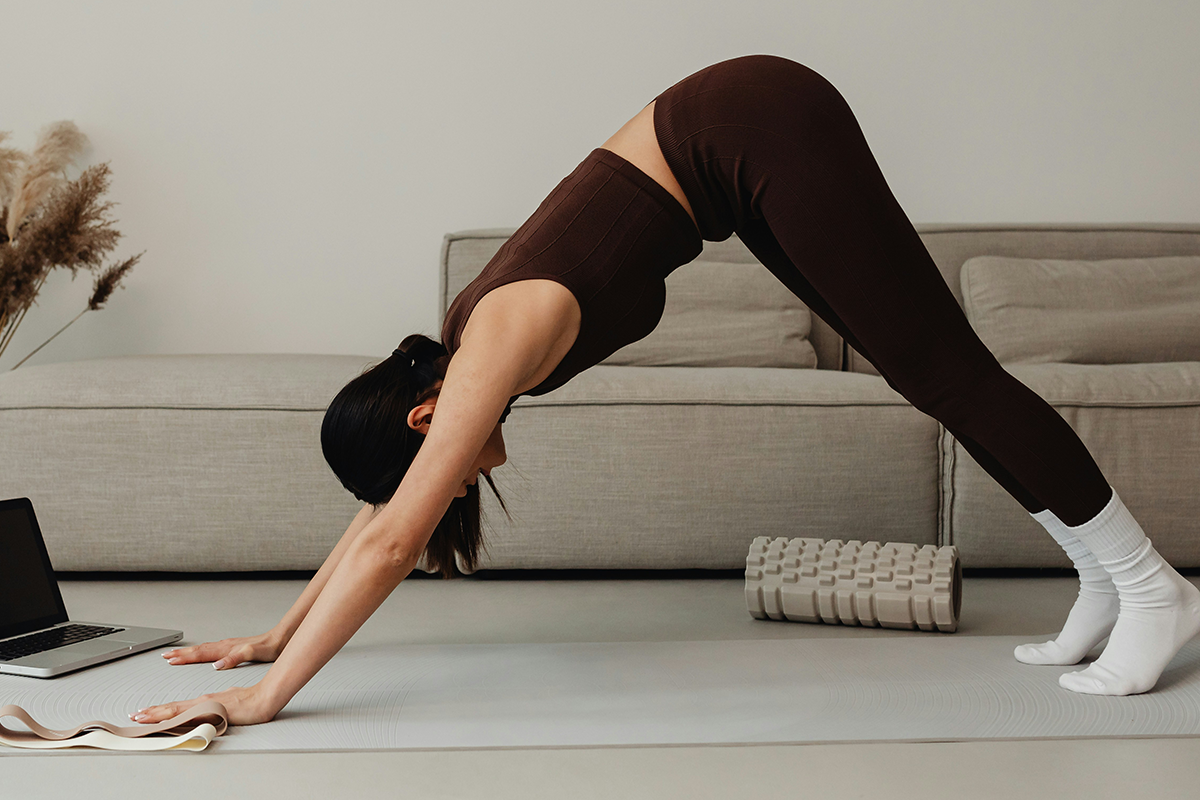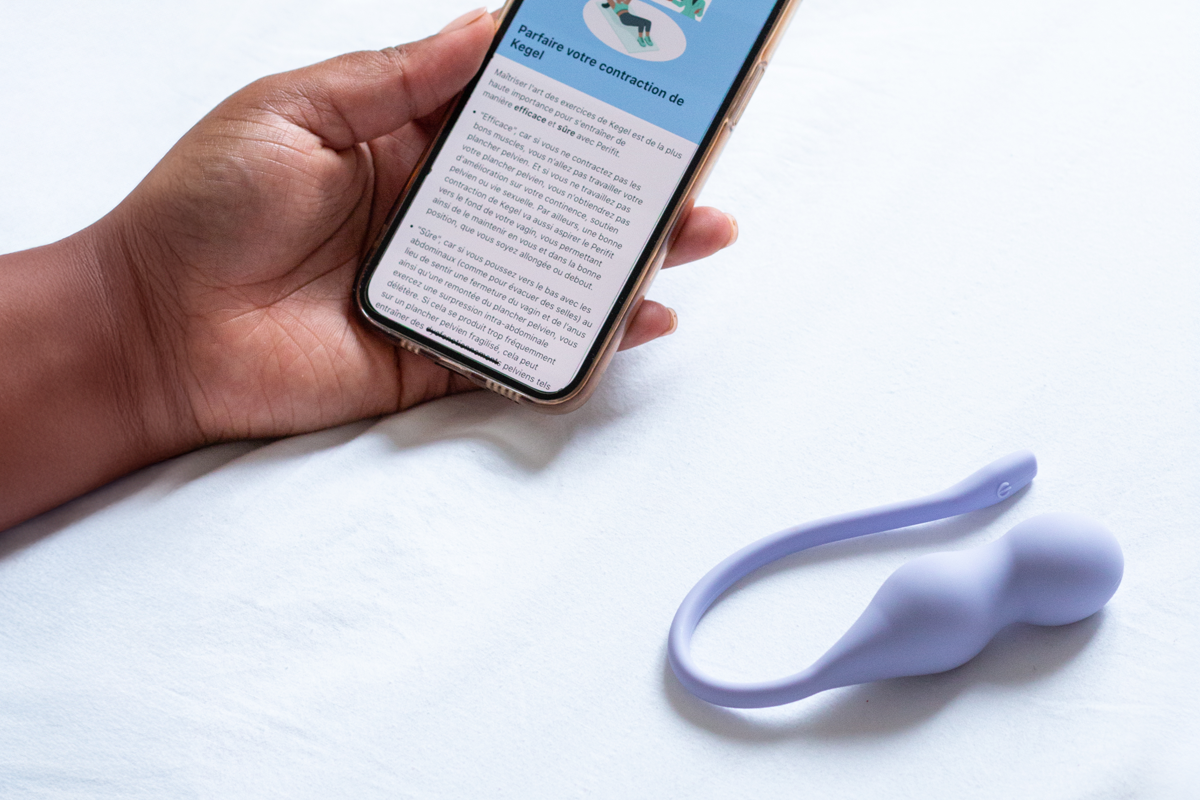This low-impact exercise method isn't just about sculpting abs and improving posture. Pilates offers a wealth of benefits for your pelvic floor muscles, which play a crucial role in supporting your core and maintaining continence. Whether you're dealing with postpartum changes, managing incontinence, or simply aiming for better overall pelvic health, Pilates might be the answer you've been searching for. In this article, we'll explore how Pilates can transform your pelvic floor strength and support your journey to improved core function.
How do pilates benefit the pelvic floor?
Core engagement and pelvic floor activation
Pilates is indeed good for the pelvic floor, as it focuses on strengthening the core muscles, including the deep abdominals and pelvic floor through deep core and pelvic floor exercises.
Pilates exercises can improve core and pelvic floor strength by coordinating contractions with breathing. The pelvic floor contracts during exhalation and lengthens during inhalation, helping to support the pelvic organs.
Posture and tension relief
Pilates improves posture and reduces pelvic tension through its emphasis on proper alignment and controlled movements. Pilates training (1) significantly enhances lumbo-pelvic stability by activating key core muscles. This improved stability and flexibility can help alleviate tension in the pelvic region.
Postpartum recovery and incontinence support
For those recovering after pregnancy, Pilates offers targeted postpartum pelvic floor exercises to rebuild core and pelvic floor strength. A 12-week Pilates program (2) led to significant decreases in stress urinary incontinence symptoms in women.
💡 The low-impact nature of Pilates makes it an accessible option for postpartum recovery and bladder control improvement.
Best pilates exercises for a strong pelvic floor
If you're looking to strengthen pelvic floor muscles without Kegels, Pilates offers an effective and low-impact alternative—here are some examples of Pilates exercises to help you build a strong and stable pelvic floor.
Pelvic Tilt
The pelvic tilt is an excellent exercise to engage the pelvic floor muscles and strengthen the core. It helps improve pelvic floor function, alleviate tension in the pelvic region, and support the pelvic organs. To perform the pelvic tilt:
- Lie on your back with your knees bent and feet flat on the floor, hip-width apart.
- Inhale deeply, allowing your lower back to press into the mat.
- Exhale and engage your core muscles, gently tilting your pelvis upward toward your navel.
- Hold the pelvic tilt for a few seconds, breathing normally.
- Inhale and release the tilt, returning to the starting position.
- Repeat for 10-15 repetitions.
Bridge Pose
The bridge pose is another excellent exercise for strengthening the pelvic floor muscles. It helps engage the core and pelvic floor while improving hip mobility and flexibility.
- Start in the same position as the pelvic tilt, lying on your back with knees bent and feet flat.
- Engage your core and pelvic floor muscles, tilting your pelvis upward.
- Exhale and lift your hips off the mat, forming a straight line from your knees to your shoulders.
- Hold the bridge position for a few seconds, breathing deeply.
- Inhale and slowly lower your hips back to the mat, one vertebra at a time.
- Repeat for 10-15 repetitions.
💡 Breathe deeply throughout the exercises, exhaling on the effort and inhaling on the release. Start with a few repetitions and gradually increase as your pelvic floor strength improves.
Kegels with Pilates breathing
To combine Kegel exercises with Pilates breathing techniques for enhanced pelvic floor activation, follow these steps:
- Assume a comfortable seated or lying position.
- Inhale deeply through your nose, allowing your belly to expand as you fill your lungs with air.
- As you exhale through pursed lips, gently contract and lift your pelvic floor muscles, as if trying to stop the flow of urine.
- Hold the Kegel contraction for 5-10 seconds while continuing to exhale.
- Release the contraction as you inhale again, allowing your pelvic floor muscles to relax.
- Repeat this cycle of breathing and Kegel contractions for 10-15 repetitions.
Remember to keep your movements controlled and avoid straining or holding your breath.
💡 Maintain proper posture and engage your core muscles throughout the exercise.
Start with a manageable number of repetitions and gradually increase as your pelvic floor strength improves.
For toe taps
Toe taps are a great Pilates exercise to strengthen the pelvic floor muscles while improving core stability.
- Lie on your back with your legs raised and knees bent at a 90-degree angle, forming a "tabletop" position.
- Engage your core and pelvic floor muscles.
- Inhale, then exhale as you slowly lower one foot toward the floor, tapping your toe lightly on the mat.
- Inhale and raise the same leg back to the starting position.
- Repeat with the opposite leg, alternating sides for 10-15 repetitions.
For the modified hundred
The hundred modified is an effective Pilates exercise that activates and strengthens the core and pelvic floor muscles, engaging these crucial areas through its controlled movements.
- Lie on your back with your legs extended at a 90 degree angle from the floor.
- Engage your core and pelvic floor muscles lowering your legs to 45 degree angle from the floor.
- Inhale, then exhale as you pump your arms up and down in small, controlled movements for five breaths.
- Inhale for five arm pumps, then exhale for five arm pumps, continuing this pattern for a total of 100 arm pumps.
- Maintain pelvic floor engagement and focus on your breathing throughout the exercise.
Start with a few repetitions and gradually increase as your pelvic floor strength improves.
💡 Proper form and controlled movements are essential for targeting the pelvic floor muscles effectively.
When to avoid pilates for pelvic floor issues?
While Pilates can be beneficial for pelvic floor strengthening, there are situations where it may not be appropriate. Individuals with existing pelvic floor disorders (3) should exercise caution with certain Pilates movements.
Signs of pelvic floor overactivation
It's crucial to recognize when you might be overworking your pelvic floor muscles during Pilates:
- Increased urinary urgency or frequency
- Pelvic pain or discomfort
- Difficulty fully emptying your bladder
- Muscle tension in the pelvic area
If you experience these symptoms, it may indicate that you're putting excessive strain on your pelvic floor.
High-impact exercises to avoid
Some Pilates exercises can exert too much pressure on a weakened pelvic floor. These include:
- Intense abdominal work like full sit-ups
- Plank positions held for extended periods
- Jumping or bouncing movements when using a pilates reformer
Instead, focus on gentler, low-impact Pilates exercises that strengthen without overstraining. Always consult a healthcare professional if you have concerns about your pelvic floor health before starting any new exercise regimen.
How often should you do pilates for pelvic floor strength?
Establish a consistent routine
To reap the benefits of pilates for pelvic floor strength, consistency is key.By practicing Pilates (3) you can have significant improvements in stress urinary incontinence symptoms when participants with a 12 weeks program. Aim to practice pilates 2 times per week, allowing time for muscle recovery between workouts.
Tailor the frequency to your needs
While twice weekly is a good starting point, you may need to adjust based on your individual goals and progress. 45-minute sessions twice a week for 8 weeks (1) can effectively improve lumbo-pelvic stability. However, if you're dealing with more severe pelvic floor issues, you might benefit from more frequent, shorter sessions.
Complement with at-home exercises
To maximize your results, incorporate pelvic floor exercises into your daily routine. Using Perifit devices for pelvic floor training with biofeedbackensures you engage the right muscles effectively. These exercises can be done at home and complement your regular Pilates practice.
Is pilates better than Kegels?
While both Pilates and Kegel exercises can benefit pelvic floor health, they work in slightly different ways. Kegels specifically target the pelvic floor muscles, while Pilates focus on the core as a whole, activating not only the pelvic floor but additional core muscles (Transverse abdominis, multifidus or diaphragm for example).
This comprehensive approach may provide additional benefits beyond isolated Kegel exercises.
The best approach may depend on individual needs and preferences.
💡 Ultimately, incorporating both Pilates and targeted Kegel exercises into your routine may offer the most comprehensive support for pelvic floor health.
What are the alternatives to pilates for pelvic floor health?
Yoga for pelvic strength
Yoga offers an excellent alternative to pilates for strengthening the pelvic floor. Lyengar yoga improved pelvic muscle strength and endurance in women with stress urinary incontinence, reducing symptoms and enhancing quality of life.
Yoga for pelvic floor incorporates poses like bridge pose, warrior II, and malasana (squat) can engage and tone the pelvic floor muscles effectively.
Hypopressive exercises
Hypopressive exercises focus on creating a vacuum effect in the abdominal cavity, which can help lift and strengthen the pelvic floor. This technique involves specific breathing patterns and postures that activate the deep core muscles. While more research is needed, some studies suggest hypopressives may complement traditional pelvic floor exercises.
Smart Kegel Trainer
Kegel exercises, also known as pelvic floor muscle training (PFMT), are essential for maintaining pelvic health. However, many women struggle to perform these exercises correctly and consistently. The Smart Kegel Trainer Perifit Care offers a solution by providing real-time biofeedback to ensure correct technique and consistent practice. Its companion app enhances the experience with pelvic floor games, making the training process more engaging and enjoyable.
💡 By combining biofeedback and gamification, Perifit Care helps women effectively strengthen their pelvic floor muscles.
The key is finding exercises that are both effective and enjoyable for consistent practice. These alternatives offer diverse options to suit individual needs and preferences.
Pilates can be an excellent addition to your pelvic floor health routine. By incorporating targeted exercises and mindful movement, you'll be on your way to a stronger core and improved pelvic function. Progress takes time, so be patient with yourself as you explore this practice. Whether you're dealing with postpartum recovery, incontinence, or simply want to maintain pelvic health, Pilates offers accessible tools to support your journey. As with any new exercise program, it's always a good idea to check with your healthcare provider first. Now roll out that mat and get ready to feel the burn - your pelvic floor will thank you!
Sources:





